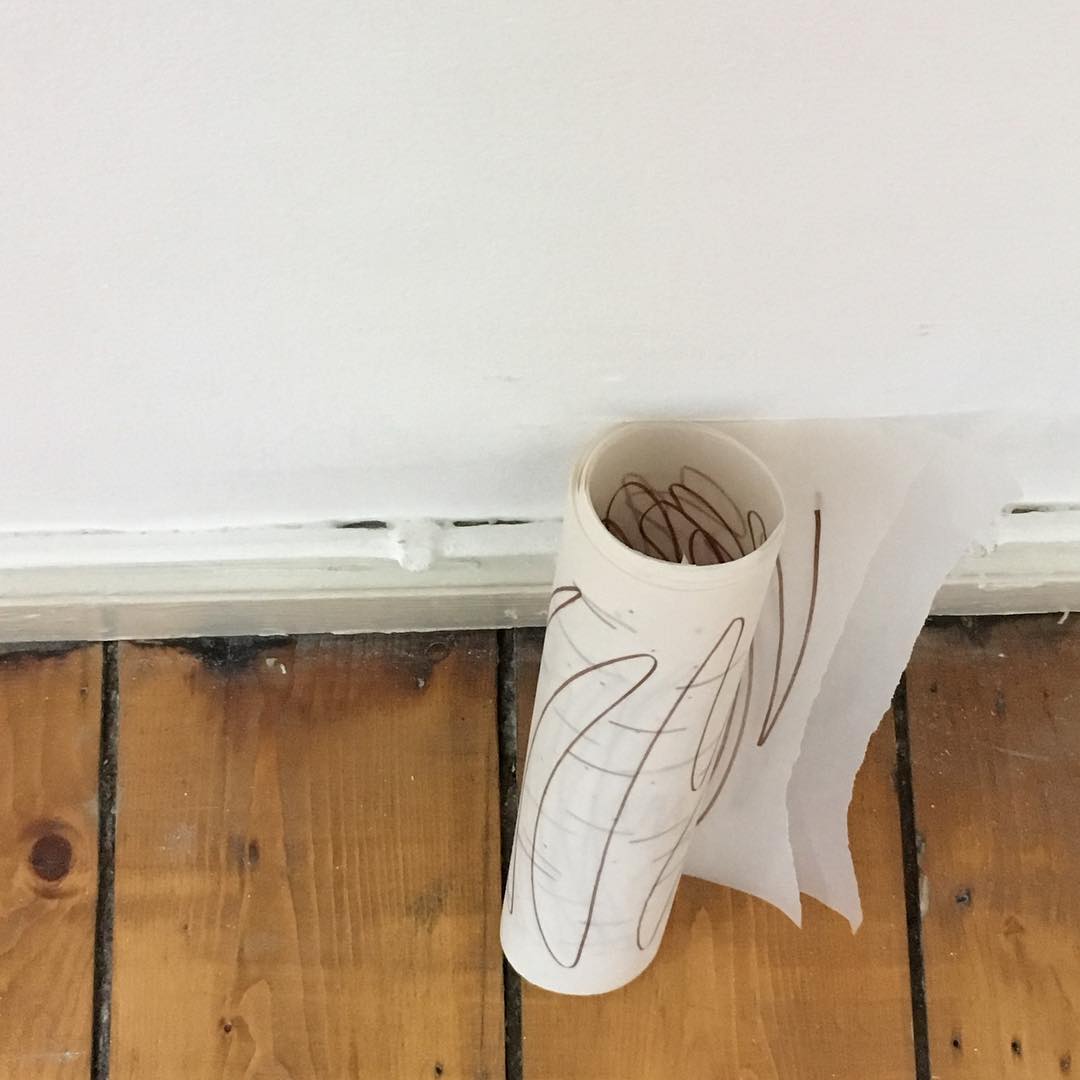The Intimacy of Lack
About the exhibition Portal Ahead! (now entering) by Olivia Normile at Ormond Art Studios, Dublin, October 2018.

Before we walked into the exhibition space at Ormond Studios I was chatting for a few moments with Cara, one for the studio members about the residency space, the studios, and about how many art spaces in Dublin did not manage to survive over the last decade. I told Cara I remember Ormond Studios opening and how happy I was they succeeded to stay open and active, and as I was talking I peeked into the space which looked like an empty studio and prepared myself for the experience of not understanding the art I am about to see.

This happened a lot over the past months, particularly with the spurring interest in transparent materials and space installations with objects so small they are barely noticeable. The sculptural object has disappeared. I do not always get it. Walking into Olivia Normile’s Portal Ahead! (now entering) at Ormond Studios it felt like the space was forming gradually through the process of discovery. This exhibition gave the sense of being an artwork completed by its viewer.
The small space had a brown, wooden floor and white walls. The room had its own presence as part of the piece, as did the view out the window. The work revealed itself in phases, obvious pieces first – a animated moving image projection and a screen showing another animation. Second the larger objects – the pipes and drawings of brightly coloured snakes. Once those were discovered it became a game of finding what else is hidden in plain sight. Small objects, not necessarily identifying themselves as sculptural objects, were placed carefully all around the space, cones and thin wires and beads, growing out of the walls and hanging off the door and window. All the objects were carefully placed in their spots but it felt as if without our looks they would have just stayed simple things in a room, rather than an art exhibition.

The process of exposure in Normile’s work elucidated many of the other invisible-objects exhibitions. Exhibition spaces with obvious art objects are often complete, they have a similar artistic value whether we visit them or not. The statement is made, the relationship between the space, the objects and the ideas already exists through the process of creation. In her artist statement the artist states she “explores the space and boundaries between image, object and idea.” Unlike object and idea, image is dependent, its value comes from being viewed. When it came to Portal Ahead! (now entering), the installation was visually activated by our looks and engagement with the space.
After spending a while in the space looking at the various objects found in it I wondered if this is a visual art instance of Gaston Bachelard’s Poetic Space. It challenges our consciousness, but it does not feel like an experienced room in that its relationship with the audience is real-time in our influence on it. It changes only in our eyes as we stand in the room, once we leave the space it returns to a space addicted to viewers, yearning to be visited and activated once again.

Perhaps this is where I missed the mark with other invisible-objects exhibitions. There is something exciting in the dependence of a space, or a piece, on my presence. There was an intimacy in the moment visiting the exhibition, realising that once I leave the space the moment will be over and perhaps will not matter any more. We are used to exhibitions and objects being independently important, having a self-value and a lasting effect on our lives when we are lucky enough to encounter them. The poetics in exhibition space, separately from the homes suggested by Bachelard, may be in the lack of the imprinting our experience of the space. It remains a constant place of potential, momentarily changing and returning to its unexperienced being.
A man shouts that which he lacks – he does not lack, he does not shout, said poet and singer Meir Ariel. Portal Ahead! (now entering), in between existence and invisibility, created an intimacy as a form of shouting for an audience. It did not feel like I was not getting the work because instead of asking what it was about, I was contemplating who was this exhibition for. By focusing on the process of discovery and unfolding of the unseen, Normile highlights the audience’s necessity not a mere theory, but a fundamental principle of current exhibition making.
